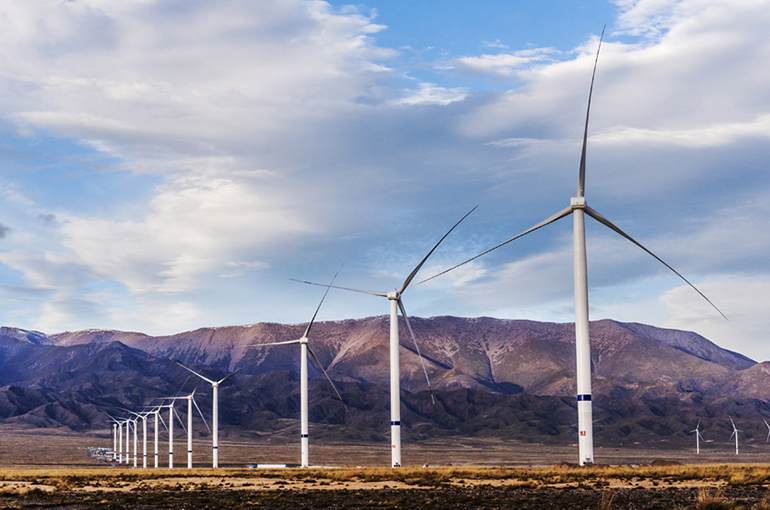 Green Energy Glut Doesn’t Cause Negative Power Prices, REN21's Head Says
Green Energy Glut Doesn’t Cause Negative Power Prices, REN21's Head Says(Yicai) June 13 -- The main problem of negative electricity prices is not the oversupply of renewable energies but that of fossil fuel capacities, according to the executive director of Paris-based global green energy think tank REN21.
"Very often renewable energy is finger-pointed when negative electricity prices happen, but actually renewable energy is not the problem," Rana Adib told Yicai.
The negative electricity price issue has become more pressing in recent months. In April, Germany's spot electricity market reported 50 hours of negative pricing, and in May, Shandong's electricity spot market experienced 22 consecutive hours of negative prices. These incidents have sparked market concerns about the future growth and sustainability of the renewable energy sector.
Negative market prices occur when there is low electricity demand and high thermal, nuclear, or fossil fuel electricity capacities that are not flexible enough to adapt to variable renewable resources, such as solar and wind power, Adib noted.
"This also occurs because fossil fuel prices are low because they are heavily subsidized globally," Adib added. For example, coal or natural gas plant operators should halt production when prices are too low, but because of the subsidies, they continue to output and sell electricity at negative prices, she explained.
"Energy transition is not only a fuel switch, as it requires a change in energy supply, infrastructure, demand, and building up of industrial capacities," Adib said.
There are solutions to the negative electricity price issue, such as phasing out non-flexible thermal or fossil fuel capacities, building upstart capacities, and increasing the flexible options, including the development of storage, dispatchable renewable energy, and heat pumps, Adib pointed out.
"So it is really about phasing out thermal and fossil fuel-based capacities and massively ramping up manufacturing capacities of all renewable energy technologies, including storage, electric vehicles, and heat pumps," according to Adib.
Moreover, it is worth noticing that governments often focus on accelerating renewable energy supply, which is necessary, but forget that the transition from fossil fuels to renewables also needs to happen on the consumption end, Adib said.
In the Renewables in Energy Demand section of the Renewables 2024 Global Status Report released in April, REN21 noted that renewable energy demand faces challenges in all major sectors because of weakening policy support. As of the end of last year, only China, the United States, and 11 other countries had in place renewable energy policies for all four demand sectors -- power, buildings, industry, and transport.
Another point that Adib addressed is the difficulty of increasing demand. The supply side is usually managed by energy ministries, while the demand side is handled by other different ministries, so there is a missing alignment of policy strategies, she said.
Therefore, governments should introduce much more aligned strategies, such as integrated policy and infrastructure planning, thus ensuring policy synergy between economy-wide energy supply and different demands from sectors and infrastructure development, Adib explained.
Even though China does face similar challenges on the demand side, it is much more advanced than other countries in terms of electrification from the end user perspective, which includes the adoption of solar thermal technologies in the building sector and the development of the new energy vehicle industry, according to Adib.
However, she noted that mandating renewable electricity use in the NEV industry could significantly boost demand for solar panels and wind energy.
Editor: Futura Costaglione